Ever wanted to take on a shotgun that feels almost equally dangerous no matter what side of the business end you’re on?
Well, I got the chance to with the Streetsweeper – a unique shotgun straight out of the 1980s.
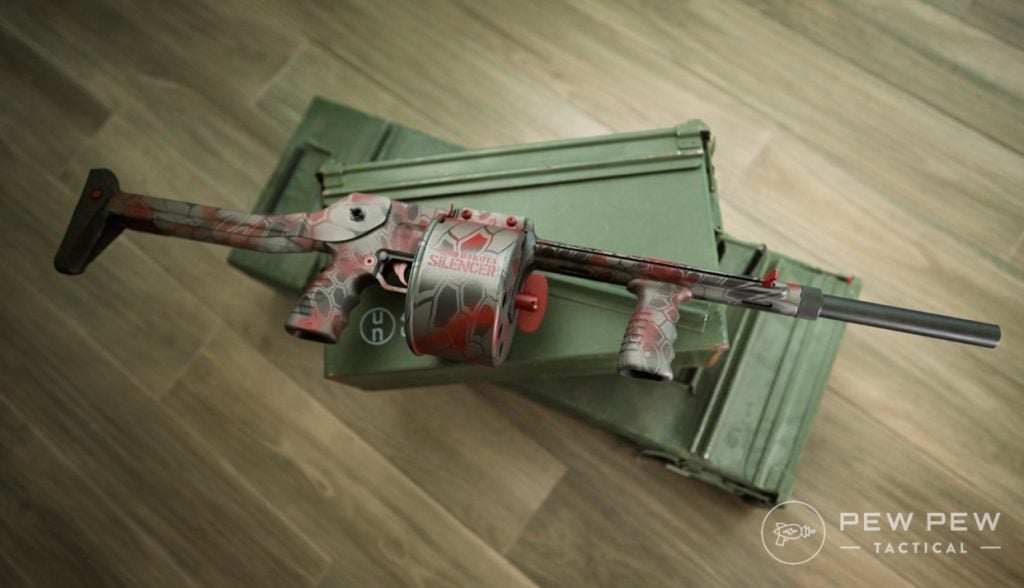
While I didn’t vibe with the Streetsweeper, it is an interesting piece of gun history – one worth discussing. So, keep reading as I walk you through what the Streetsweeper is, how it came to be, and what I saw on the range.
If you aren’t too keen on reading about it, watch the full video review below.
As always, check out Pew Pew Tactical’s YouTube channel for more guns and gear.
Table of Contents
Loading…
What’s the Streetsweeper?
Initially designed by Hilton R. Walker in the early 1980s, the gun’s original design offered a high-capacity, 12-gauge shotgun without the overall length associated with a traditional magazine tube holding 12 rounds.
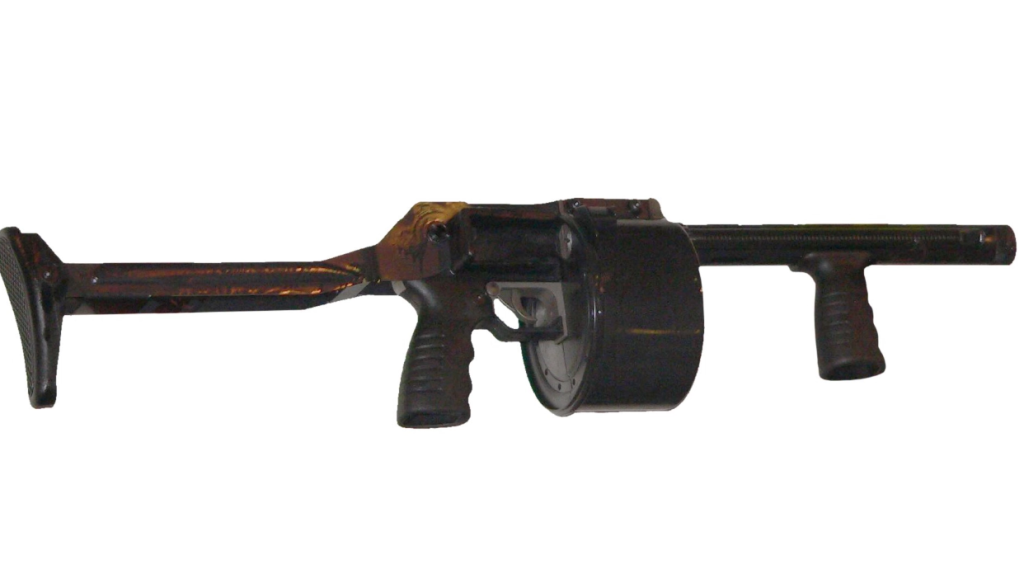
Walker’s first iteration — originally called the Striker and manufactured by South African manufacturer Armsel — pulled its primary design cues from the operating action of a double-action revolver.
Basically, an oversized non-detachable aluminum drum magazine rotated upon each trigger pull.
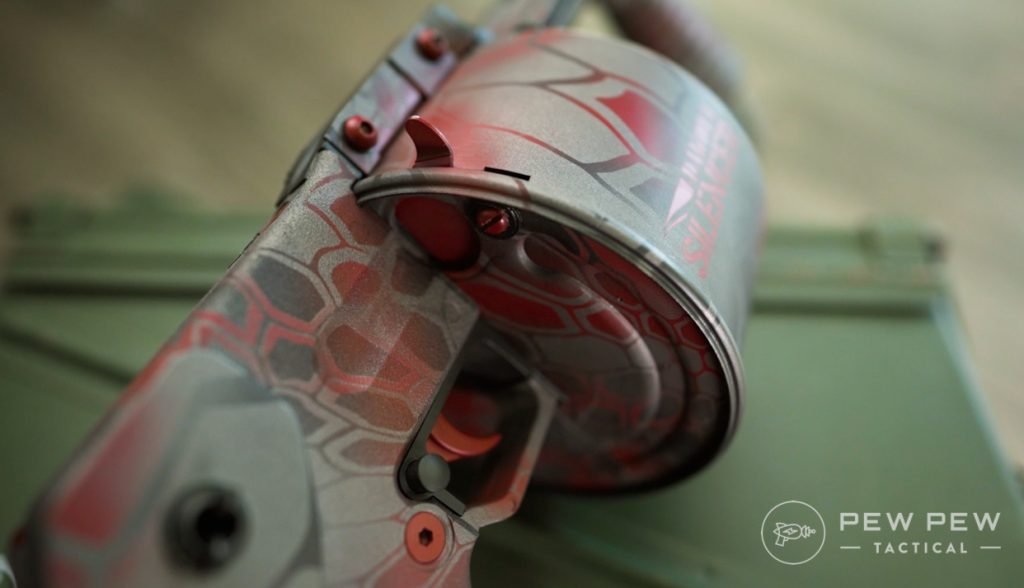
Unlike a revolver, though, the street-sweeper relies upon a mechanical wind-up lever on the front of the magazine to turn the drum…instead of the trigger like a traditional revolver.
This was done to alleviate trigger pull weight, though I still wouldn’t call it a “light” pull.
While the Striker offered the power of a 12-gauge in a much smaller package, it also had some considerable design flaws.
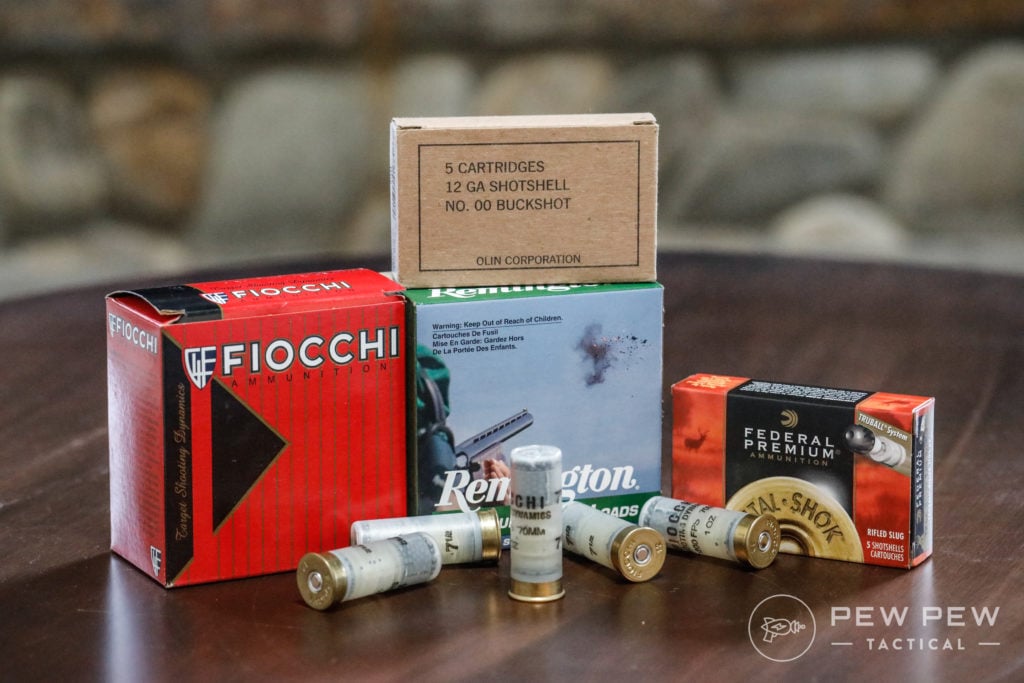
Namely, the drum magazine was rather slow and cumbersome to load and unload — advancing the drum by hand to load. And it utilized a spring-loaded shell ejector to extract each shotshell when empty.
It’s not technically a “true” semi-automatic shotgun by virtue of being entirely mechanical and not gas-driven. But the Striker was still regulated like a semi-automatic shotgun in South Africa. So, it wasn’t as readily accessible for the civilian market as Walker would’ve liked.

But that gave way to a slightly improved variant that addressed these issues.
New & Improved
Dubbed the “Protecta,” this version featured a prominent rectangular shell ejector on the right side of the receiver. It also utilized a small amount of gas to introduce automatic shell ejection (but not drum cycling) to the gun.

Finally, it ditched the wind-up mechanism on the front of the drum magazine in favor of a strange cocking mechanism built into the gun’s foregrip. This required the user to rotate the grip slightly to cycle the drum.
While Walker’s design never caught on in any large-scale sense, it did see some limited adoption by the South African defense force, Israeli police, and strangely enough, the Communist Vietnamese military.
Though obviously derivative of the Striker design, the gun we have wasn’t produced by Armsel.

Instead, it’s a copy produced by none other than Cobray and SWD — American manufacturers responsible for a variety of .380 variants of the MAC10 and MAC11.

NFA-Bound
Produced with an 18-inch barrel to comply with American classifications for NFA dictated short-barreled shotguns, it quickly became a target of the Brady campaign.

After evaluation by Treasury Secretary Loyd Bentsen, the shotguns were found to have “no sporting value” and then reclassified as destructive devices. The ATF followed up by notifying owners that the guns would either need to be surrendered or registered.
But How Does It Shoot?
The Streetsweeper is punishing and even slightly nerve-wracking to use.
The SWD Cobray version utilizes a top-folding stock that features some aggressive, sharp edges for your chin to ride upon if you come anywhere close to attempting a cheek weld with it.

It also flexes on its rotational axis with each shot and since the buttpad doesn’t lock into position, it’s not much help.

Wind It Up
The Streetsweeper opts for the wind-up drum mechanism of the original Striker design, and to say that it takes some getting used to is…maybe a bit of an understatement.
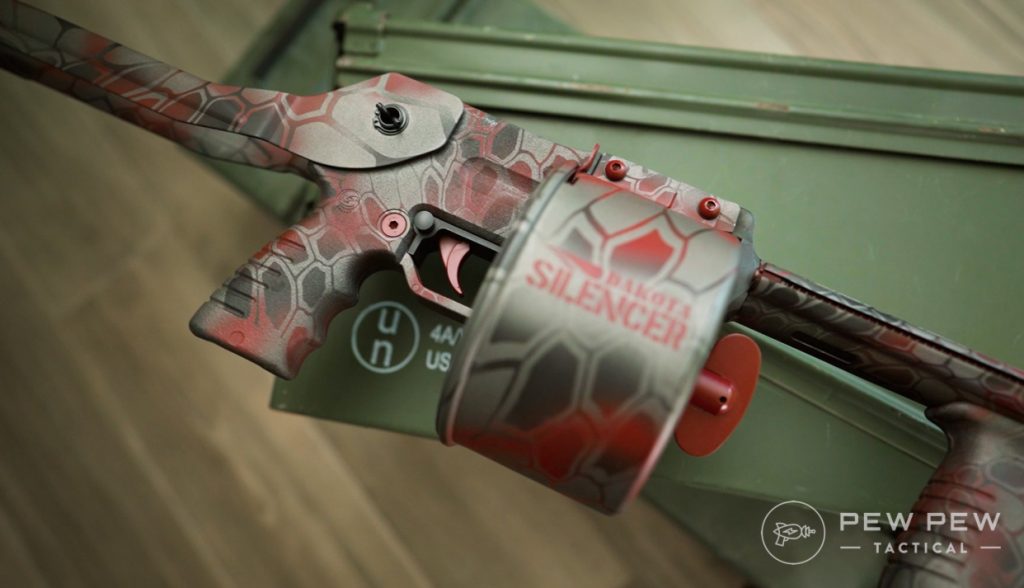
As mentioned, you’ve got to load each round individually through the back of the drum before using the wind-up lever to rotate the drum to the next open slot. This process repeats until the drum is loaded up with enough spring tension to cycle.

Speaking of, cycling through an entire drum was a task that our particular Streetsweeper struggled with…leading to multiple situations where we’d run out of tension with a few live shotshells still in the drum.
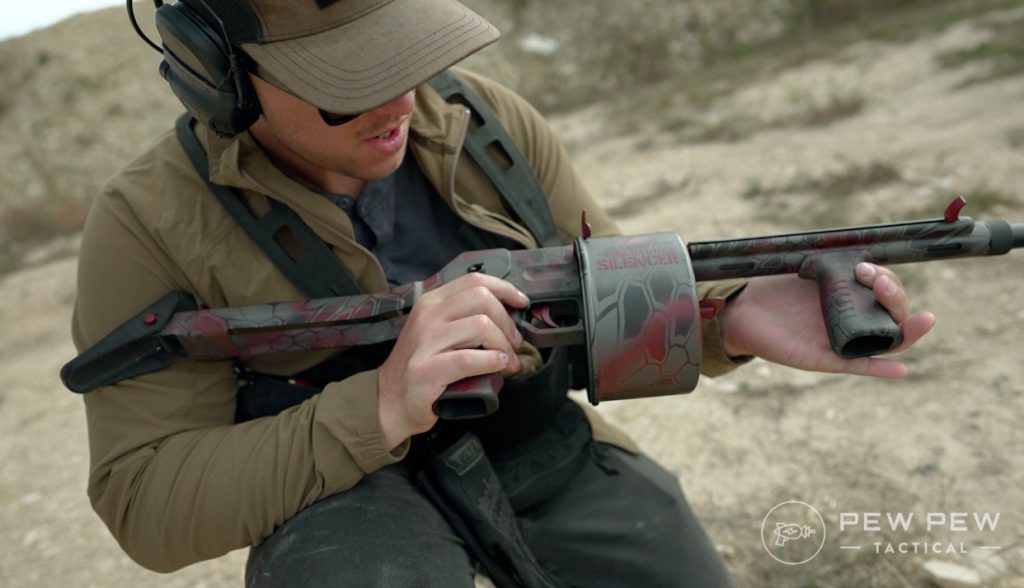
That meant that we either had to know exactly how much tension to add in order to get back to the live rounds or keep a tally of the slots with live ammo.
Combined with the fact that the only way to rotationally move the drum forward a slot is to put the gun on safe and pull the trigger…I think you can probably see where I’m going with this.
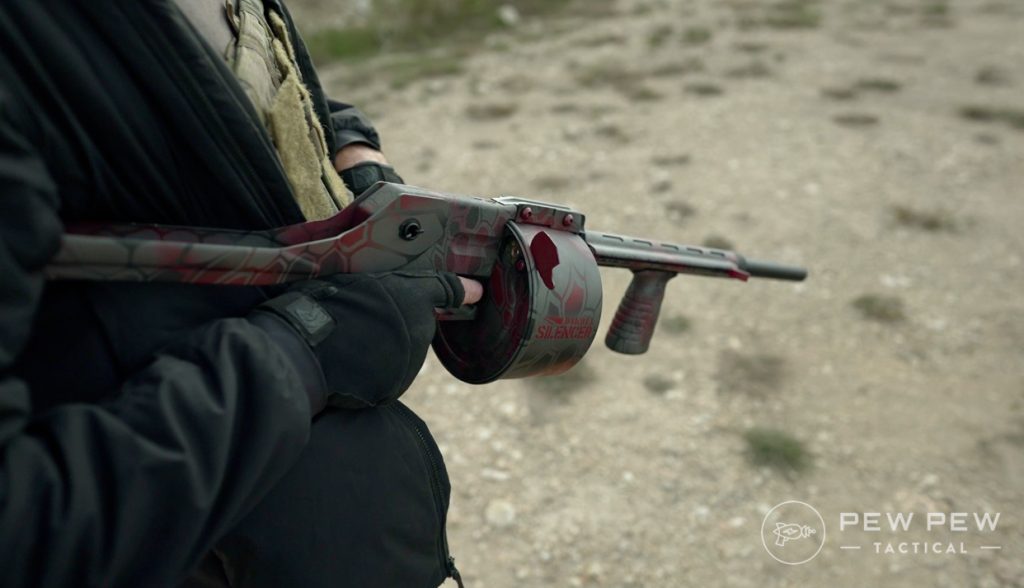
Those spring tension issues meant that this gun essentially becomes a dangerous-feeling game of Bop-It.
Even if the gun is on safe, it feels extremely wrong to pull the trigger for any other purpose than actually firing the gun.

Additionally, as the Streetsweeper has pulled more than a few of its design cues from a revolver, it’s got a bit of cylinder gap going on.
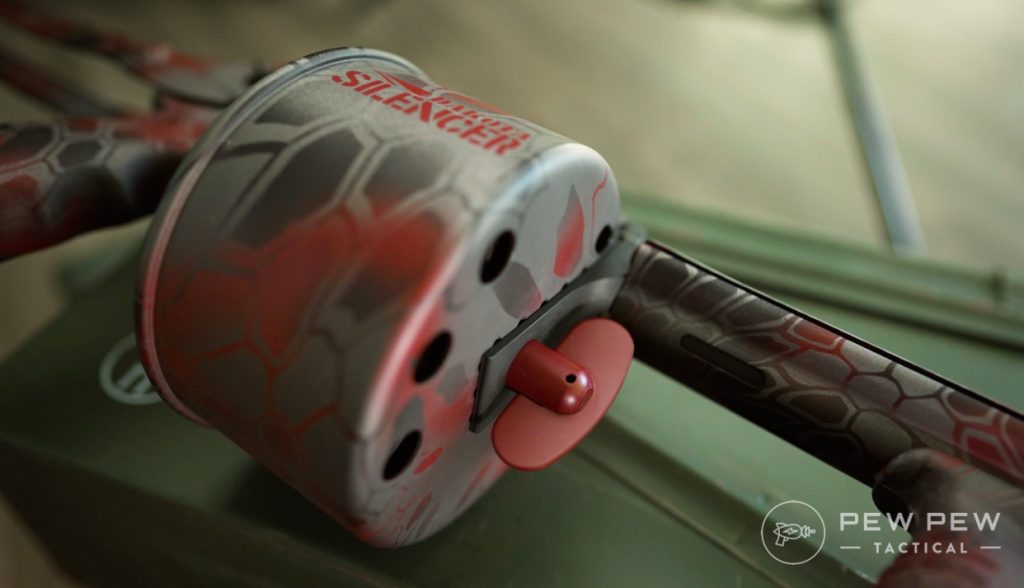
For those that need a refresher, cylinder gap refers to the small space between the cylinder and the chamber that allows the cylinder (in our case drum mag) to rotate freely.
But that means that this thing spews carbon, gas, and more as you’re firing.

That Trigger, Tho…
The Streetsweeper’s trigger has a quite strange feeling as well. I figure this relates to its role in the rotation of the drum magazine.

It’s kind of got a two-stage feeling to it — where half a trigger pull releases the pin that keeps the drum static, pulling all the way actually fires the shotgun, and releasing it rotates the cylinder and chambers your next shotshell.
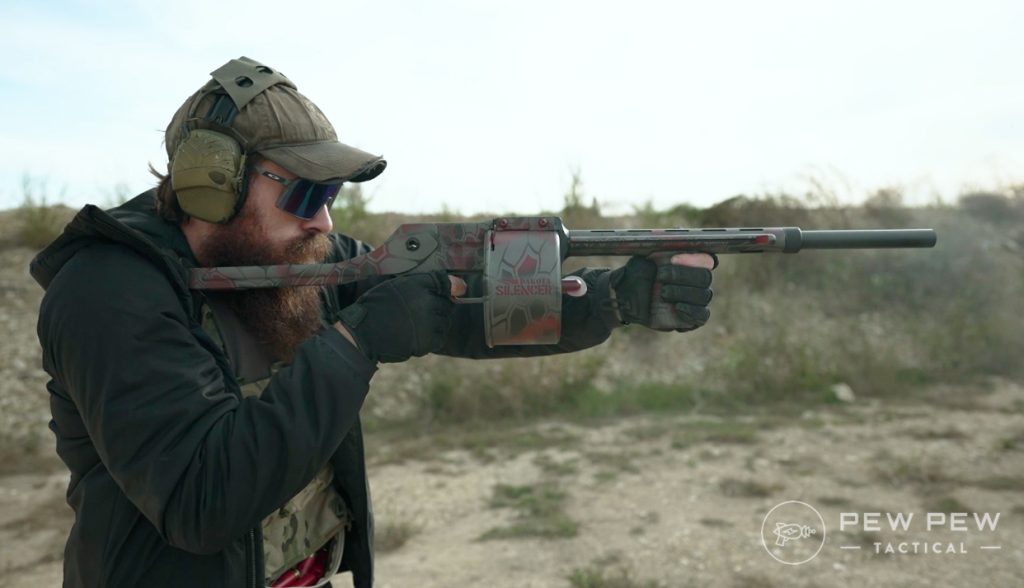
While this should alleviate the heavier trigger pull, in our case, it created an increasingly sluggish and heavier, spongier-feeling trigger pull. I chalk that up to our spring tension issues, though.
The Pains of Unloading
Once you empty the drum magazine, it’s time to manually unload each shotshell.
Again, this means opening the stubborn metal flip cap on the rear of the drum and using the spring-loaded ejection rod thing to pop each one out.
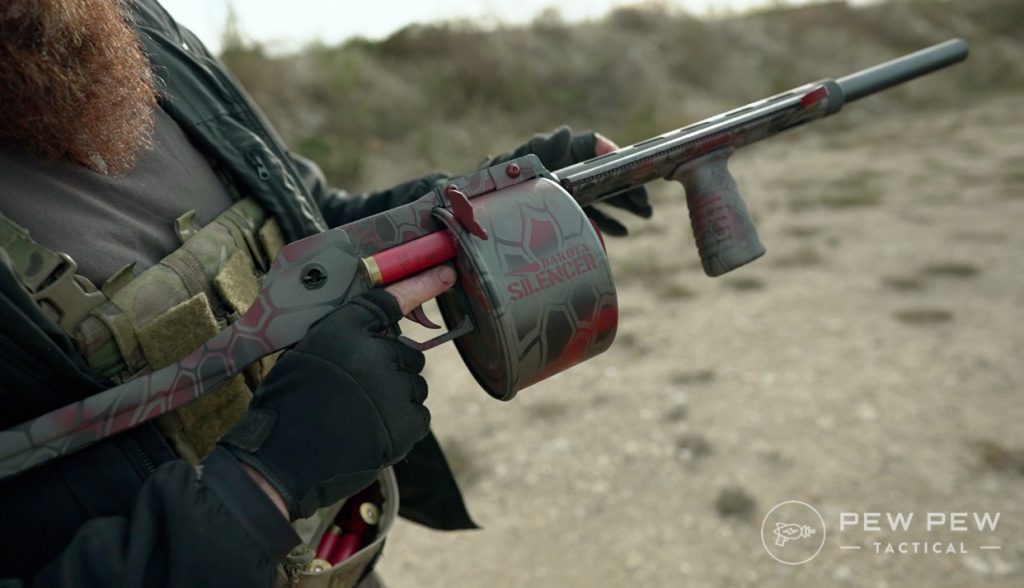
Then, you got to pull the trigger to advance the drum to the next (hopefully) empty position.
Because of the spring issues, you’ll be tapdancing back and forth between winding the mechanism and pulling the trigger to fully unload all of your empty shells.

By the Numbers
Accuracy: 3/5
I mean, it’s a 12-gauge shotgun so when it fires you can theoretically hit something.
Reliability: 2/5
We had issues with the spring tension which caused some difficulties with cycling.

Ergonomics: 2/5
To put it simply, there’s little to no ergonomics here.
Overall: 2/5
For something as simplistic as a shotgun, it sure does feel unnecessarily complicated.
Conclusion
Though the Streetsweeper wasn’t really my cup of tea due to its ergonomics and difficulties loading, unloading, and cycling, it remains a strange but interesting entry into the annals of gun history.

Also, huge thanks to Silencer Central for loaning the Streetsweeper to us to review!
Again, you can see it in action in the video below.
What do you think of the Streetsweeper? Let us know in the comments below. Want a shottie you can use for home defense? Check out our recommendations of the Best Home Defense Shotguns.

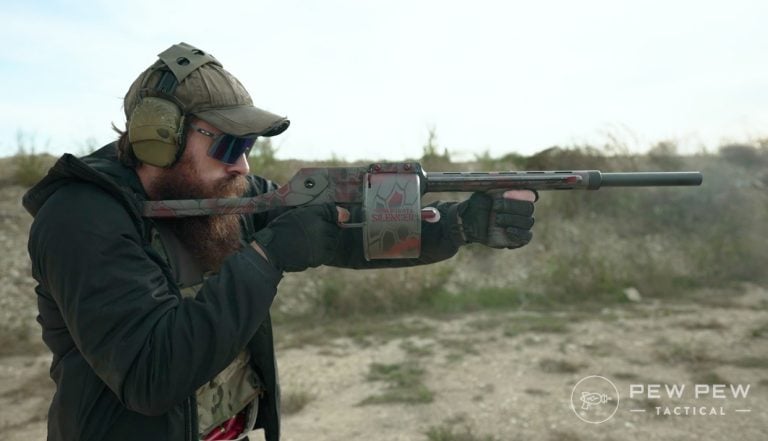













8 Leave a Reply
Look utterly pointless. Hardly a street sweeper if it doesn't function and not even a good range toy.
someone needs to tell grizzly Adams he should stop skipping gym day and represent the corps the right way instead of looking like a high school freshman with a beard
Dumb.
Shot one back in the 2000s using Buck shot- might be the worst designed weapon I have ever seen. The feed slows down with every shot. A Remington 870 is a light saber by comparison.
But you can shoot it with one hand. Go to youtube watch?v=L4BMFp4ZTo0
Man..your candor is without equal. I always enjoy your take on this stuff. Keep it up.
Wow! Looks like fun, in a sadistic sort of way. A wind-up shotgun, who knew? Thanks for sharing this odd duck.
IN SUMMARY, 12 GAUGE TURD